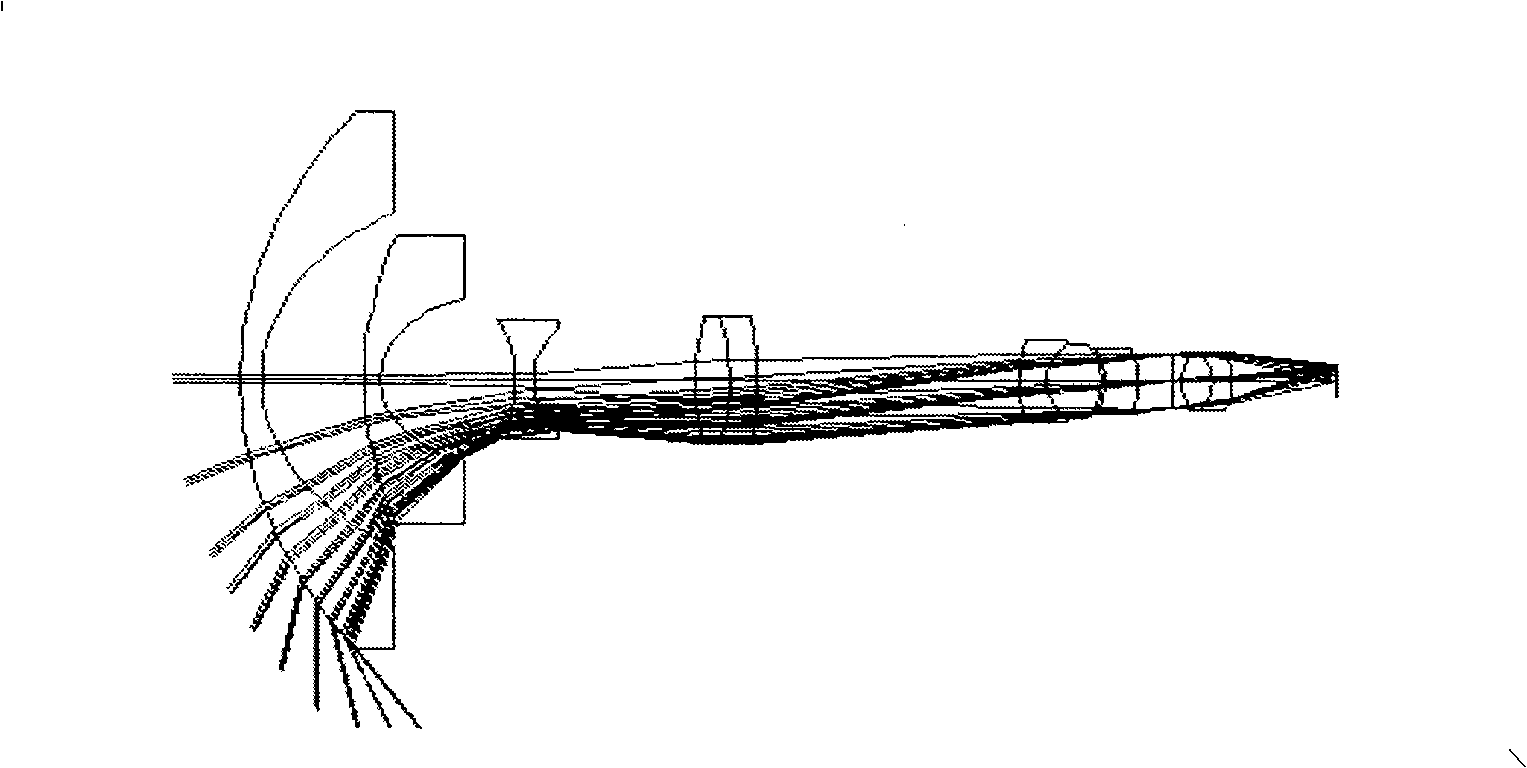240 degree field angle ultra-large pore diameter fish-eye lens base structure
A technology of fisheye lens and field of view, which is applied in the direction of optical components, optics, instruments, etc., can solve the problems of design difficulty and design software limitation, no practical significance, poor structure and processability, etc., and achieve compact structure, easy processing, and elimination of The effect of negative thickness
- Summary
- Abstract
- Description
- Claims
- Application Information
AI Technical Summary
Problems solved by technology
Method used
Image
Examples
Embodiment Construction
[0016] The present invention will be further described below in conjunction with the accompanying drawings and embodiments.
[0017] Depend on figure 1 The shown 240° field of view basic structure is the monitoring lens designed in this embodiment. There are seven lens groups consisting of ten lenses in total; the seven lens groups are arranged in sequence with lens 1, lens 2, lens 3, lens 4, lens 5, lens 6, and lens 7; among them: lens 4, lens 5 and lens 7 is a doublet lens group; Lens 1, lens 2, lens 3, and lens 6 are single lenses; The role of the field of view; lens 3 is a double-concave lens, and the surface with a large absolute value of curvature faces backward; lens 6 is a negative meniscus lens, the concave surface is ahead of the convex surface, and it plays the role of reducing the aperture of the front lens and increasing the clear aperture of the system ; Then doublet lens group 4 comprises double convex lens 4-1 and negative meniscus lens 4-2; Doublet lens grou...
PUM
 Login to View More
Login to View More Abstract
Description
Claims
Application Information
 Login to View More
Login to View More - R&D
- Intellectual Property
- Life Sciences
- Materials
- Tech Scout
- Unparalleled Data Quality
- Higher Quality Content
- 60% Fewer Hallucinations
Browse by: Latest US Patents, China's latest patents, Technical Efficacy Thesaurus, Application Domain, Technology Topic, Popular Technical Reports.
© 2025 PatSnap. All rights reserved.Legal|Privacy policy|Modern Slavery Act Transparency Statement|Sitemap|About US| Contact US: help@patsnap.com


